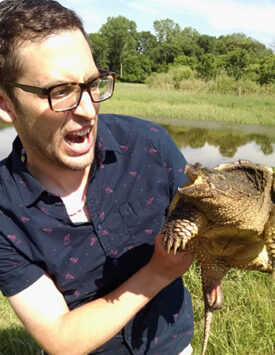Peterson, J. D., V. A. Peterson, and M. T. Mendonça. 2008. Growth and developmental effects of coal combustion residues on Southern Leopard Frog (Rana sphenocephala) tadpoles exposed throughout metamorphosis. Copeia 3: 499-503.
Peterson, J. D., M. B. Wood*, W. A. Hopkins, J. M. Unrine, and M. T. Mendonça. 2007. Prevalence of Batrachochytrium dendrobatidis in American Bullfrog and Southern Leopard Frog larvae from wetlands on the Savannah River Site, South Carolina. Journal of Wildlife Diseases 43(3): 450-460.
Muzzall, P.M., J. D. Peterson, and M. G. Gillilland III. 2003. Helminths of Notophthalmus viridescens (Caudata: Salamandridae) from 118th Pond, Michigan, U.S.A. Comparative Parasitology 70(2): 214-217.

